Parkinson's is the second most common neurological disease after Alzheimer's and affects about one percent of people over sixty. The symptoms develop slowly. These include rigidity, a characteristic resting tremor, and movement dysfunction with walking problems. As it progresses, problems with sleep, thinking, and eventually dementia may occur. Survival after diagnosis is seven to fifteen years.
Like many neurological problems, PD is a syndrome with recognized clinical characteristics rather than a clearly defined disease with definitive lab tests and treatments. Genetics have been weakly implicated, but cannot be the primary cause because the incidence is skyrocketing.
Parkinson's (PD), Autism, Alzheimer’s (AD), Multiple Sclerosis (MS), and Amyotrophic Lateral Sclerosis (ALS or Lou Gehrig’s disease) are likely caused by toxins. Ken Stoller lays out some of the evidence implicating glyphosate in Incurable Me: Why the Best Medical Research Does Not Make It into Clinical Practice (2015).
US government databases were searched for… crop data, glyphosate application data and disease epidemiological data. Correlation analyses were then performed on a total of 22 diseases… Correlation coefficients are highly significant (< 10–5) between glyphosate applications and hypertension (R = 0.923), stroke (R = 0.925), diabetes prevalence (R = 0.971), diabetes incidence (R = 0.935), obesity (R = 0.962), lipoprotein metabolism disorder (R = 0.973), Alzheimer’s (R = 0.917), senile dementia (R = 0.994), Parkinson’s (R = 0.875), multiple sclerosis (R = 0.828), autism (R = 0.989), inflammatory bowel disease (R = 0.938), intestinal infections (R = 0.974), end stage renal disease (R = 0.975), acute kidney failure (R = 0.978), cancers of the thyroid (R = 0.988), liver (R = 0.960), bladder (R = 0.981), pancreas (R = 0.918), kidney (R = 0.973) and myeloid leukaemia (R = 0.878).
He also says that many other toxins increase the chances of developing PD. Paraquat exposure, for example, increases the risk 2.5-fold. Ken goes on:
The latest research shows that AD, PD, and ALS share a common, or at least overlapping, pathologic mechanism(s).98 This implies that AD, PD, and ALS are essentially the same disease with a slight variation on a theme. The theme is pesticide poisoning, and there is a synergistic99 effect of heavy metals (think aluminum and mercury)…
Assuming one does not have Lyme or Parkinsonism from a toxic exposure, such as carbon monoxide, it is worth a trial of 4-PAS or 5-ASA, which will selectively chelate manganese (Mn) from the human body. Mn is an essential trace element but can be absorbed or ingested in toxic forms and in excess. Exposure can be from gasoline to well water. If the 4-PAS or 5-ASA changes symptoms, this is about Mn toxicity issues.119 Glutathione is not a specific detoxification agent for just Mn, but a large dose will help remove some of it. Mesalazine, also known as mesalamine, is 5-aminosalicylic acid (5-ASA), and like 4-PAS is considered by conventional medicine to be anti-inflammatory because it helps treat inflammatory bowel disease. It is the active part of the antibiotic sulfasalazine, which is used to treat Crohn’s disease.
I highly recommend Stoller’s book.
After writing Butchered and Hormone Secrets, I knew how lame most standard medical care is.
For example, with few exceptions, cancer therapy is a bad joke. Oncologists' randomized controlled trials are paid for and controlled by Pharma, and the medical journals that publish them are whoring for their paymasters as well. Oncology's published goal is increasing patient survival by two to three months, but the studies are so ruined that the supposed proof is far-fetched.
Because of lack of funding, alternative treatments have not been intensively studied. Rather than fancy trials, we are left with "anecdotes"—stories—but many of these show robust evidence of benefit.
As I study each wholistic medicine field, I am repeatedly stunned by the fertility and efficacy of the treatments. As you scan this, remember that some of the following may not address root causes. Instead, they strengthen or detox PD patients and allow their bodies to recover.
I do not cover conventional PD treatments. These control symptoms but do not affect disease progression.
Thiamine (vitamin B1) is harmless and one of the most convincing alternative PD treatments.
Pierre Kory gave his COVID intensive care patients intravenous vitamin C, steroids, and thiamine. Over 80 percent survived in a group where most of the ones conventionally treated went to the morgue.
The daily oral dose of thiamine that usually works best for PD is 1,500 to 2,500 mg and occasionally up to 4,000 mg. This is taken once a day or in divided doses twice a day. Less than 200 mg daily is sometimes effective, and some treating physicians start as low as 50 mg twice daily. The vitamin can also be injected intra-muscularly twice weekly at 50 to 100 mg doses. Some patients have had success with 100 mg daily under the tongue, and a few have been able to decrease this dose to three times a week.
High-dose thiamine is safe for long-term use, and symptom improvement typically persists during treatment. The vitamin may have a therapeutic effect on the neurons of affected nerve centers.
Metformin can cause thiamine deficiency and should be avoided.
This treatment is nearly harmless. Worsening symptoms such as tremors, constipation, recurrent pain, or jittery feelings happen occasionally and may be a signal to decrease the dose.
Dosing consistency and careful attention to symptoms is the path to the best results. Peak improvements may only happen after three to six months. Here is a patient story:
I started taking B1 in early 2019. I have tried different doses as high as 3000 mgs/day (made me too jittery) and for about 6 months only took 1000 mgs/day. More recently I am back at 2000 mgs/day, which seems to be best for me. I took a 30-day break after 18 months just to see how I would function without B1. I was ok for about 3 weeks then PD symptoms started returning - stutter steps, unsteady balance and slight tremor. At 4 weeks my PD symptoms were getting worse so I went back on 2000/day and was fine again within a couple of days (sorry, I lost the ref).
References: PD and thiamine
Antonio Costantini, MD, treated 2500 patients and was the dean of Parkinson’s thiamine treatment. His nurse was interviewed here: Experience with B1 therapy in Parkinson's with Ms Pala, Dr Costantini's Head Nurse.
High-dose thiamine and essential tremor by Antonio Costantini (British Medical Journal, 2018). A related problem.
Essential tremor is a common neurological disease. The medical treatment of this affection currently involves the use of propranolol, primidone and other drugs. These drugs, however, are often not effective in reducing tremor and cause side effects in a large share of the patients treated. The treatment with intramuscular high-dose thiamine has led to a rapid, remarkable and persistent improvement of the symptoms in two patients with essential tremor. This result suggests the possibility that high doses of intramuscular thiamine may be an affordable alternative, highly effective and long-lasting medical treatment that has shown no relevant side effect.
An open-label pilot study with high-dose thiamine in Parkinson's disease (Neural Regeneration Research). They used 100 mg of thiamine intramuscularly twice a week.
We found that the long-term treatment with the intramuscular administration of thiamine has led to a significant improvement of motor and non-motor symptoms of the patients with PD; this improvement was stable during time and without side effects. Our report represents an important contribution to PD therapy, although further experience is necessary to exclude the placebo effect and to confirm the present observation, with clinical, cellular, and molecular data. The aim of the future studies will be to investigate the clinical, restorative, and neuroprotective effects of the long-term treatment with thiamine in PD.
Dr. Bryan, the author of Parkinson's and the B1 Therapy, was treated with thiamine but still has a slight tremor. In her interview below, she mentions several other conditions, including essential tremor, that can be improved with thiamine.
PD treated with bloodletting or donation for iron overload.
If we do not have menstrual bleeding or other blood loss, humans gain a milligram of iron from their diet each day over their lifetimes. Since iron overload is toxic, Mercola recommends donating blood to improve health.
Parkinson's disease patients have a 30 to 40 percent increased iron in the area of the brain involved with their disease, the substantia nigra. Aluminum, another toxic metal, is elevated there as well. In laboratory animals, PD symptoms can be induced by injecting iron into this location. Because of evidence like this, some speculate that excess iron is related to Parkinson's.
Glutathione
Glutathione occurs naturally in the body and destroys free radicals and other harmful substances. It is abnormally low in the substantia nigra of PD patients. Studies suggest that glutathione depletion occurs earlier than the increase in iron. So wholistic physicians believe that glutathione injections are one of the critical therapies for PD. Intravenous and oral versions can be obtained from compounding pharmacies.
Astaxanthin is another possible treatment.
[This] is a well-known antioxidant. Mounting evidence has revealed that astaxanthin is neuroprotective and has therapeutic potential by inhibiting neuroinflammation... Mechanistically, astaxanthin scavenges radicals…
Another reference for astaxanthin is HERE.
Paul adds: Astaxanthin has helped me incredibly not to get burned despite working long hours outdoors, often on roofs. It's also very beneficial in preventing macular degeneration, which my dear paternal grandfather had. I mix coconut oil, Lugol's iodine, and aspirin powder if I'm outside tanning.
Low-dose naltrexone therapy for PD
A patient story:
Her neurologist's diagnosis of Parkinson's was confirmed at Mayo Clinic. Her quality of life was about three on a 10-point scale, and she had to quit her job because of her disability. With a no-hope diagnosis, she started researching and learned about low-dose naltrexone (LDN) in 2009 and convinced her neurologist to prescribe it. She started on 3 mg for one year and quickly noticed improvement, a feeling of well-being, and less anxiety. Currently, she's on 4.5 mg, all her symptoms improved, and she has been weaned off all Parkinson's meds. She rates her quality of life at nine on a 10-point scale. She still has a few bladder spasms but otherwise is doing well, including regaining her sense of smell.
LDN for Parkinson's Disease: Low Dose Naltrexone (2014) is below; many academic references are available.
LDN (Low Dose Naltrexone) is a proven-safe (by the FDA in 50mg doses!) off-label prescription drug that has gained a great deal of attention over the past few months due to its remarkable disease-modifying effects of controlling and reversing symptoms of Parkinson's Disease. Lexie is one person who has experienced a reversal of most of her Parkinson's Disease symptoms over the past five years. She was officially diagnosed with Parkinson's in 2008 (although her non-motor symptoms began 20 years earlier)…
Lexie offers detailed information about her experience with taking LDN. She has been able to titrate off her daily use of traditional PD medications while controlling and reversing most of her own PD symptoms, thanks to LDN. Many doctors are unfamiliar with LDN as a treatment for Parkinson's symptoms. It is a prescription medication, so a prescription from a doctor is necessary. Lexie offers suggestions about how to discuss a request for an LDN prescription from your doctor and offers specific recommendations about where to get LDN once the drug is in hand… (from the book description).
Niacin, vitamin C, and Vitamin D
Current existing clinical studies have shown that a high-niacin diet can reduce the risk of PD [34, 35]. A previous case report also demonstrated that oral niacin (500 mg twice daily for three months) significantly improved rigidity and bradykinesia in a patient with idiopathic PD… after the cessation of oral niacin due to obvious adverse effects (unacceptable nightmares and skin rash), the symptoms of rigidity and bradykinesia relapsed [36]. However, other studies failed to notice the remarkable clinical efficacy [37, 38]. Therefore, more clinical observations are warranted to verify the efficacy as well as side effects of niacin in PD.
There is evidence that ascorbic acid can protect against both levodopa toxicity and the MPTP neurotoxicity [47, 48]. Vitamin C can increase the production of dihydroxyphenylalanine (DOPA). Seitz et al. noted overproduction of DOPA in a dose-dependent manner after incubation of the human neuroblastoma cell line SK-N-SH with ascorbic acid (100-500 mM) for 2 hours… The scholars speculated that ascorbic acid may be effective in the treatment of early-stage PD [49].
Vitamin C can improve the absorption of levodopa in elderly PD patients with a poor levodopa bioavailability [50]. Previous studies showed that ascorbic acid can reduce the levodopa dosage under the premise of equal efficacy [51]. Combination of anti-PD drugs and vitamin C may be more effective for alleviating the symptoms of PD.
Vitamin D3 can protect dopaminergic neurons against 6-hydroxydopamine-mediated neurotoxicity and improve the motor performance in the 6-hydroxydopamine-induced PD rat [103]. It may be related to vitamin D's properties of inhibiting oxidative stress and decreasing the production of reactive oxygen species and free radicals [104]. In addition, endothelial dysfunction may be associated with low vitamin D levels in patients with PD [105]. The definitive correlations between vitamin D and PD require more researches.
Mr. A reported he had experienced the tremor for a month, and it had been worsening. He also had difficulty using his dominant right hand for routine daily activities. Mr. A was oriented, and his short-term memory was intact. He was ill-appearing, irritable with psychomotor slowing, and did not wish to rise from his bed. He had no gingival or periungual bleeding and did not bruise easily. He had no corkscrew hairs. The patient was started on no medications known to cause extrapyramidal symptoms (EPS).
In the hospital, the tremor persisted unabated for two days. On the third day, Mr. A was started on 1,000 mg of vitamin C IV twice daily. He received a 2,000 mg IV that day, but the IV fell out, and he refused its replacement. Several hours later, Mr. A stated that he felt much better, got out of bed, and asked to go outside to smoke. The author noted complete resolution of the right-hand tremor and cogwheeling 20 hours after starting the vitamin C IV. Mr. A refused a repeat serum vitamin C assay.
Since many of the actions of vitamin D are anti-inflammatory, Life Extension believes that maintaining optimal vitamin D blood levels (50–80 ng/mL) may quell some of the inflammatory aspects of Parkinson's disease neurodegeneration. Having optimal vitamin D levels might likely decrease the activation of microglial cells and reduce the release of inflammatory cytokines.
Hormone guru Neal Rouzier, MD, says treatment with testosterone and estradiol are critical.
He wrote:
Read Perlmutter's book on Parkinson's. I have had good results treating patients with high-dose CoQ. I also had tremendous results with the IV glutathione. You can also take intramuscular shots daily. The problem is that the effect lasts just 24 hours, requiring daily injections. IV push of 5 ml works best, or two shots intramuscularly daily.
The second most crucial treatment is high-dose testosterone. The MOST essential treatment is estradiol [E2, an estrogen] 2 mg/day. After one month, increase this to 4 mg. That is the BEST to prevent further progression. You must take testosterone with the E2. Otherwise, the E2 will suppress the testosterone (personal communication).
Deprenyl for Parkinson's
Deprenyl's drug class, the "MAO inhibitors," is currently used as third-line antidepressants. Doctors with traditional training, like me, have been told to avoid them because they are toxic. The truth seems to be that, unlike the Prozac-class SSRI drugs, they improve depression. Another barrier to Pharma company acceptance is that these are no longer profitable because they have been off-patent for years.
Here are summaries of a few studies about PD treatment:
The first released results announced that deprenyl had delayed the need for levodopa therapy by 57 percent. A subsequent publication of DATATOP results was less enthusiastic. It acknowledged that at least part (and perhaps all) of the delayed need for levodopa was due to deprenyl relieving the symptoms of Parkinson's disease, while the underlying neuro-degeneration continued. A claim was made for neuro-protection, but the study design could not prove such protection.
Drugs that inhibit MAO-B, such as deprenyl (Selegeline) and rasagiline (Azilect), are used in the treatment of early Parkinson’s disease.223-225 Blocking MAO-B with medications such as deprenyl not only raises dopamine levels in brain tissue, but also appears to be neuroprotective. MAO-B inhibitors block free radical formation that occurs during dopamine metabolism and blocks apoptosis (programmed cell death) of neurons.
Scott Schroeder says mercury toxicity due to dental "amalgam" fillings causes PD:
When I lectured in London in 2018, an oral surgeon from Spain spoke after me. He presented a number of his patients who were diagnosed with Parkinson's. Most of their symptoms resolved after he removed the mercury amalgam and various other metals from their mouths.
I spoke to him afterward and said: So you have been able to cure Parkinson's by removing the metal from your patient's mouths? He said NO, not "Parkinson's," but Parkinson's-LIKE symptoms—they look alike.
I wonder how many "diagnosed" cases of Parkinson's and MS are simply undiagnosed metal allergies or reactions. Like multiple sclerosis, PD has no specific test, and the diagnosis is based on symptomatology.
I have always wondered whether Michael J. Fox has any metals in his body. Likewise, Tom Selleck has had neuromuscular issues that have limited his acting ability. And Celine Dion was diagnosed with "Stiff Person's Syndrome" and could not perform anymore. Several women I have been working with (previous news anchors and music industry people) tried to contact her after she announced her problem. They wanted to let them know my patient almost fully recovered after removing the metals from his body.
It would be good for the cause if one of these celebrities had an issue caused by this and announced her improval. They could become a spokesperson in the name of a healthier world (private communication).
Mercury is present in regions of the brain affected by PD.
Stem cells are the most promising and successful PD treatment.
Stay subscribed to learn more in a subsequent post.
Other references
Thiamine dosage instructions for PD and a complete background is HERE.
An article on thiamine, mercury, and other issues is HERE.
The Parkinson's Recovery website is now only found on the Wayback Machine web archive.
How People With Parkinson's Reverse Symptoms (2014):
Parkinson's Recovery Radio show guests often talk about how they reversed the symptoms of Parkinson's Disease and restored the delicate balance of hormones in their bodies. Now you can read nine of these amazing stories as they were first told on the radio show in this 2012 release of Pioneers of Recovery. Each chapter includes details on the steps that each pioneer took to make the miracle of healing happen. Therapies that paved the road to recovery include TMJ adjustments, Candida cleanses, Voice Profiling, sound therapy, Tai Chi, Martial Arts, Qigong, Low Dose Naltrexone, forced exercise, Chinese medicine, supplements, diet, detoxes, and even opening blocked jugular veins. Pioneers of Recovery will transform your expectation about the possibility of recovery. You will be intrigued by how each pioneer went about reversing their symptoms. These stories confirm the wisdom of the ages that the body does know how to heal. It just needs a little help remembering how (from the book description).
When patients and families are butchered by "healthcare," I suffer along with them. So I write to teach others about the world we face and to encourage them to join the resistance.
Thank you for subscribing to Surviving Healthcare. Please accept my ebooks as gifts: Cassandra's Memo (download HERE), Hormone Secrets HERE, and Butchered by "Healthcare" HERE. Hard copies of Cassandra are at Barnes and Noble, and the other two are on Amazon. Write reviews if you like them.
I claim no copyright, so you may quote my essays or books without restriction or permission as long as you credit me. Also, I am retired, so I never give personal medical advice. Use the information here at your own risk.
Parting shot: Healthy treatment for constipation caused by PD or other issues:
Drinking a quart or more of water in the morning that contains several grams of powdered vitamin C and a gram or two of powdered magnesium is a natural cure. Here is a three-pound jar of sodium ascorbate powder that costs $55.
Thomas Levy's book, Primal Panacea (2011), reports that vitamin C has no known toxic dose and that magnesium is similar. The limit on how much you can take of each is what you can tolerate before getting diarrhea. So be careful and work up to the proper dose.
You can get a liposomal version of C from Mercola.com that causes no diarrhea and will enable you to take about three times the dose of the plain compound. He sells and recommends magnesium threonate, and a liposomal version can be purchased HERE. These are well absorbed, do not cause diarrhea, and can be taken even if you use the dissolved powder before breakfast.

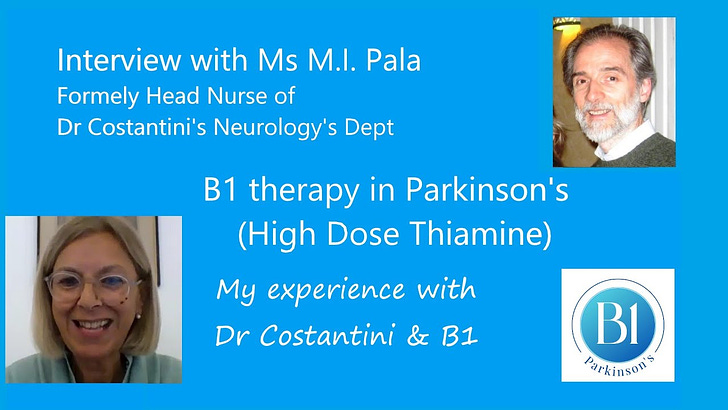

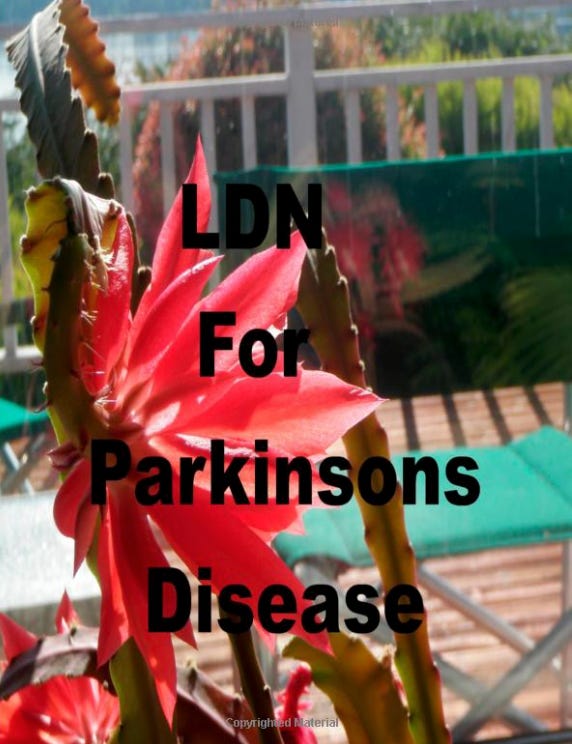
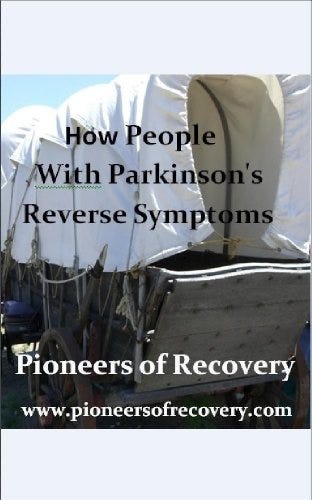
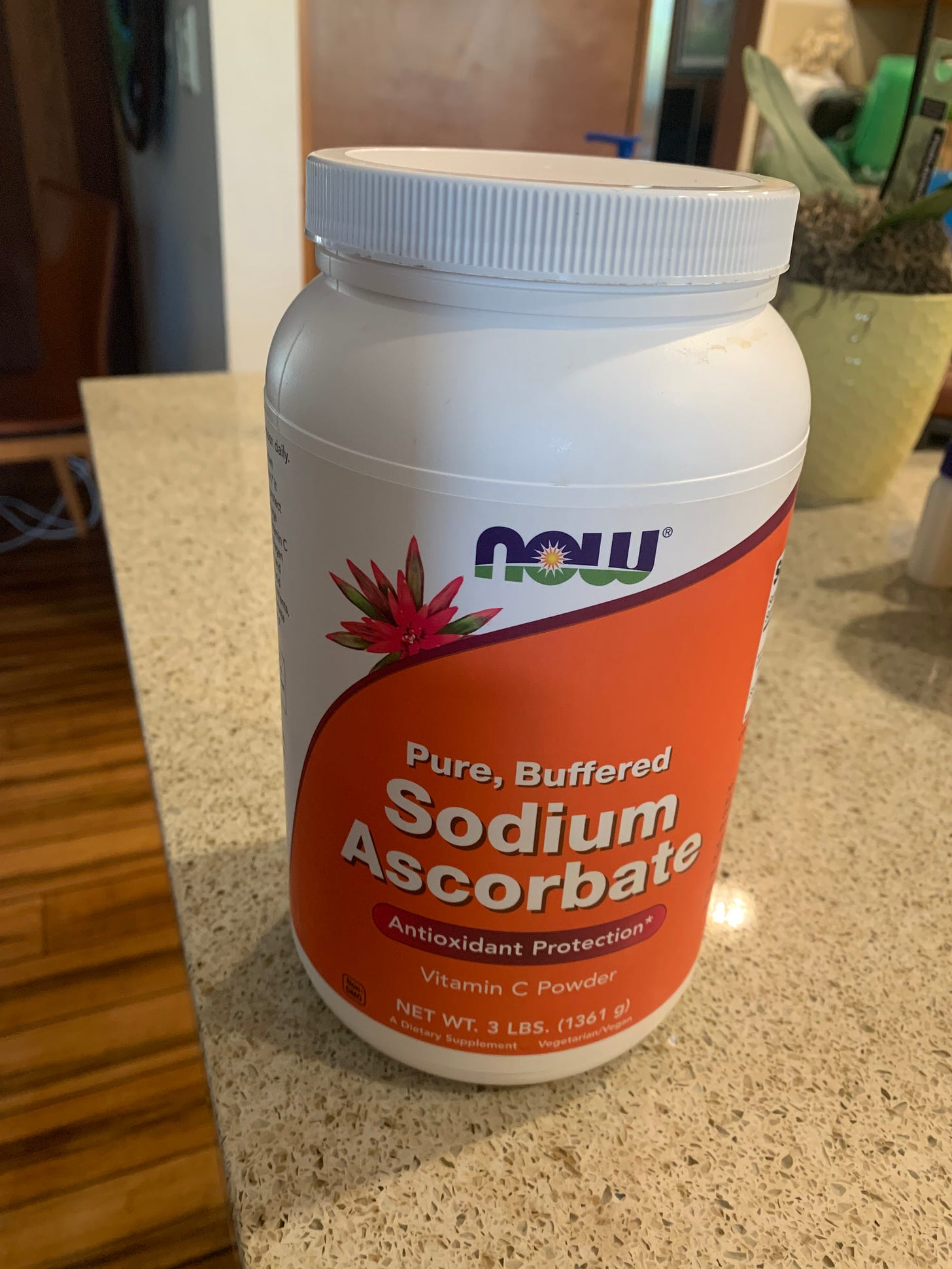



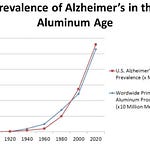
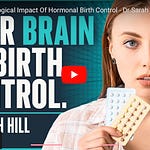




Share this post